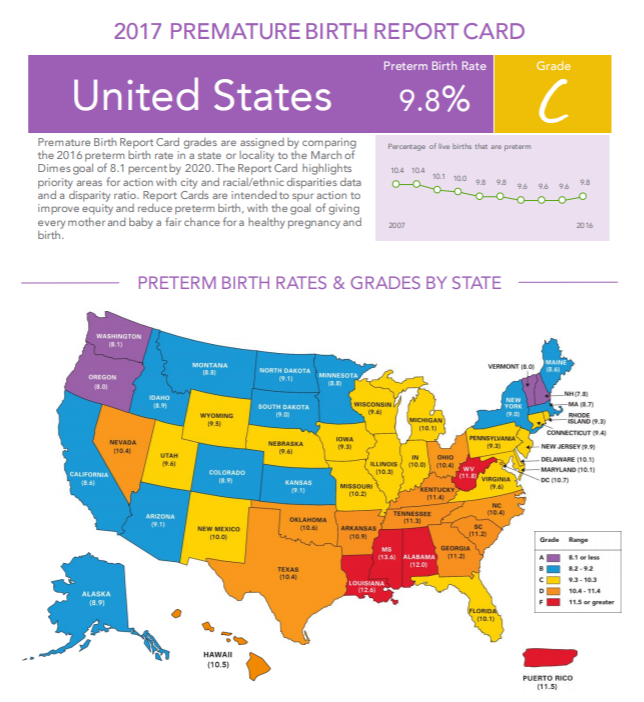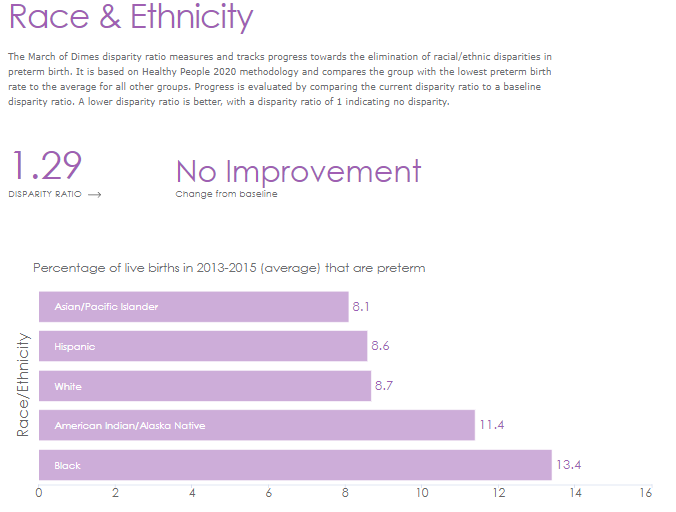The statistics
Total prematurity rates are increasing in Wisconsin.
According to the Wisconsin Department of Health Services, 6,373 babies were born prematurely in 2016* - an increase of 122 over 2015. After making a significant drop in 2013, the number of premature births climbed during the next three years and is expected to increase again.
16 % or 987 of the 2016 premature births were classified by the state of Wisconsin as "Very Premature." This means that these babies were born more than two months too soon. They will often spend a significant amount of time in the NICU and face many health and cognitive obstacles.
*2016 is the most recent records year with completed data (updated February 2018).
The March of Dimes report card on Premature Birth downgraded Wisconsin in 2016.
The March of Dimes' annual report card gives the United States and overall rating of "C." At a 9.6% premature birth rate, Wisconsin is also given a rating of "C." This is a downgrade from 2016 when Wisconsin was given a rating of "C" with a 9.4% premature birth rate.
Very Preterm Birth tends to be higher in urban areas.
Ten counties make up 71% of the 987 premature births that were classified as "very preterm" or less than 32 weeks gestation. The blue bars indicate the number of very preterm births. The red line indicates the percent of the total. For instance, in Milwaukee County, there were 295 preterm births that were less than 32 weeks gestation. That number represents about 20% of the total preterm births (less than 37 weeks) in Milwaukee County.
Race and Ethnicity Play a Critical Role in the Numbers
According to the March of Dimes statisitcs, a black woman in Wisconsin is 54% more likely to have a preterm birth than all other women in the state.
A Wisconsin Public Radio article summarizes the most recent results indicating that low income women and women of color are at a much higher risk of having a baby preterm. Wisconsin's efforts to reduce that disparity received low marks.





